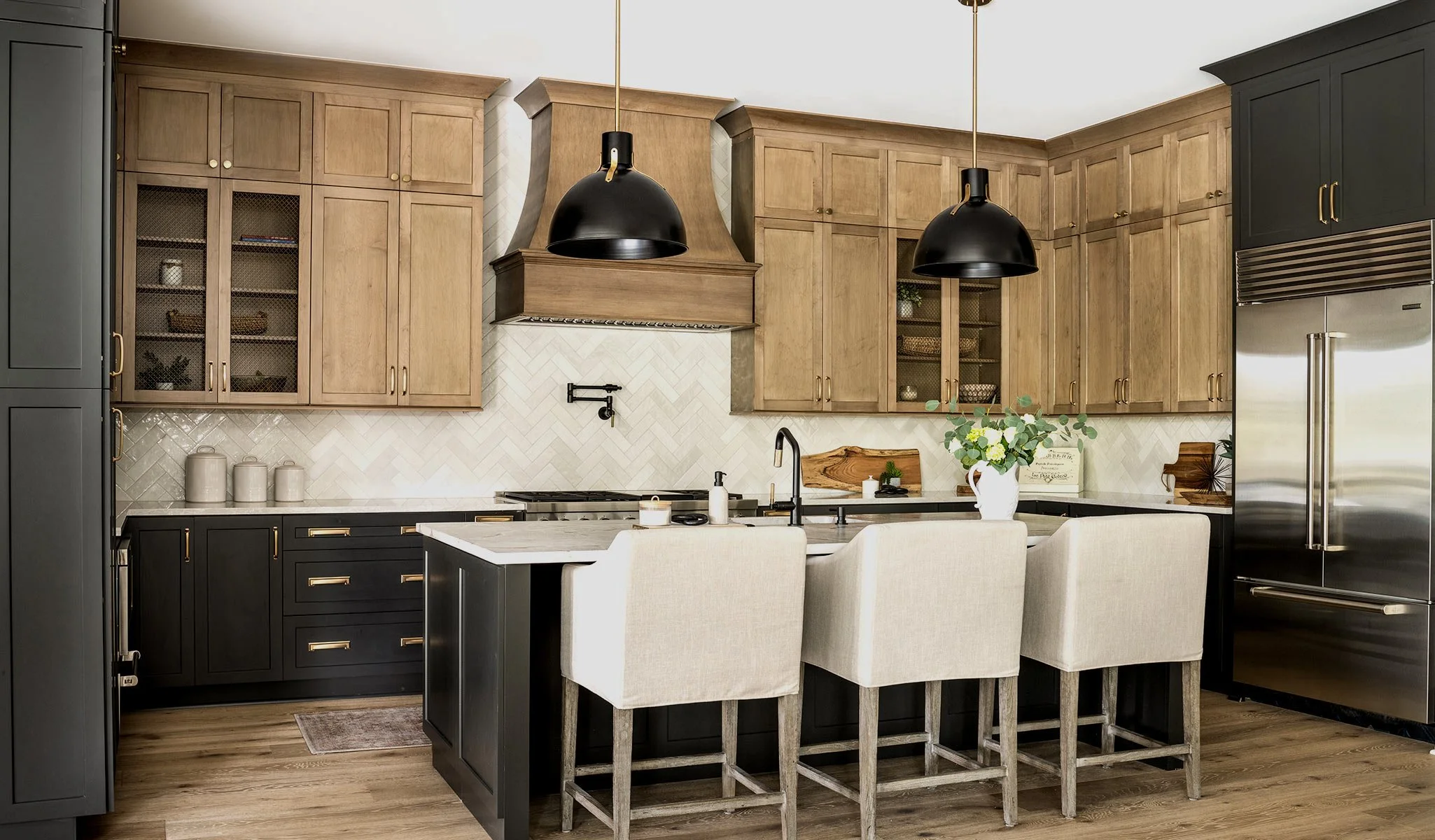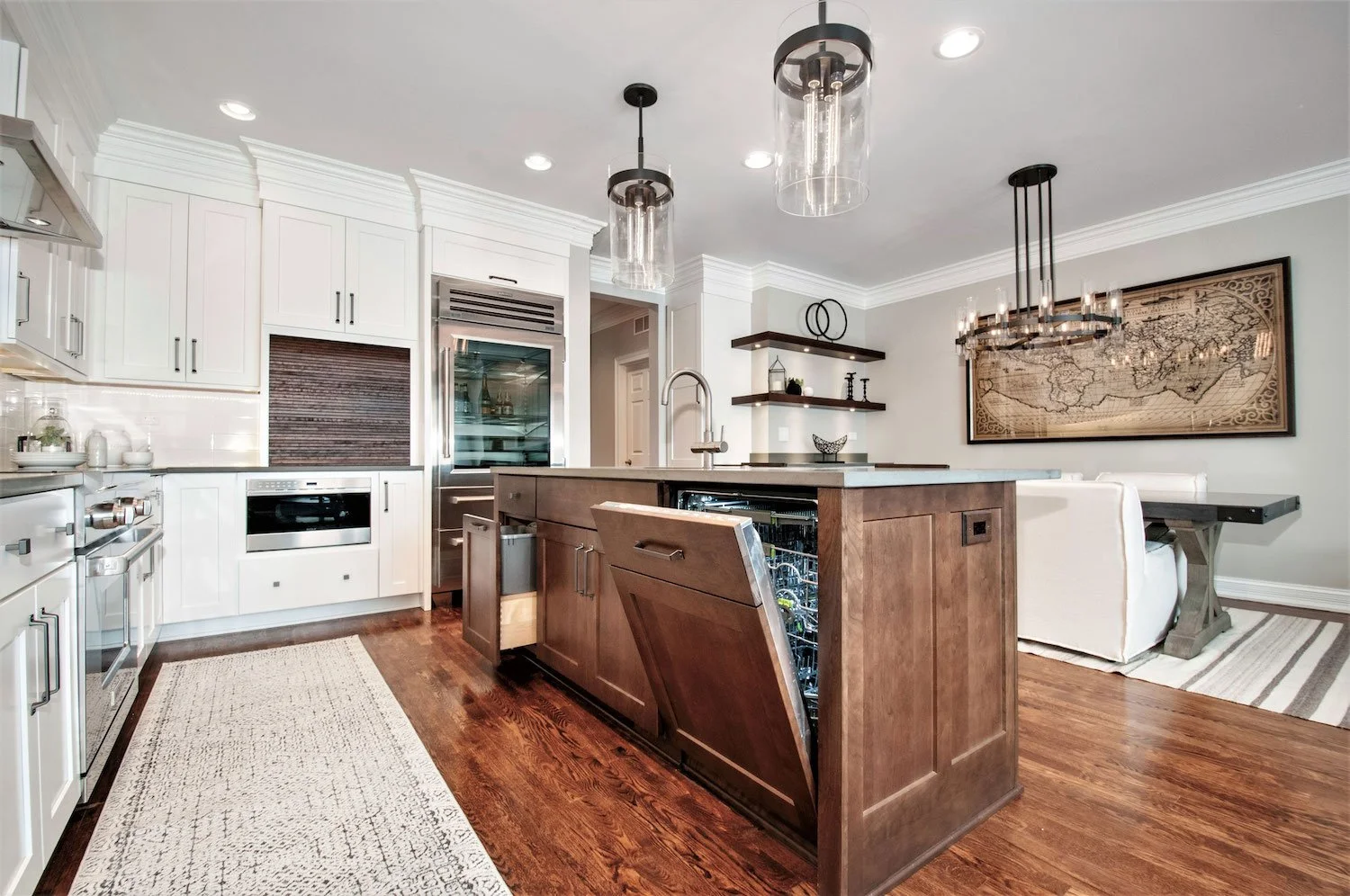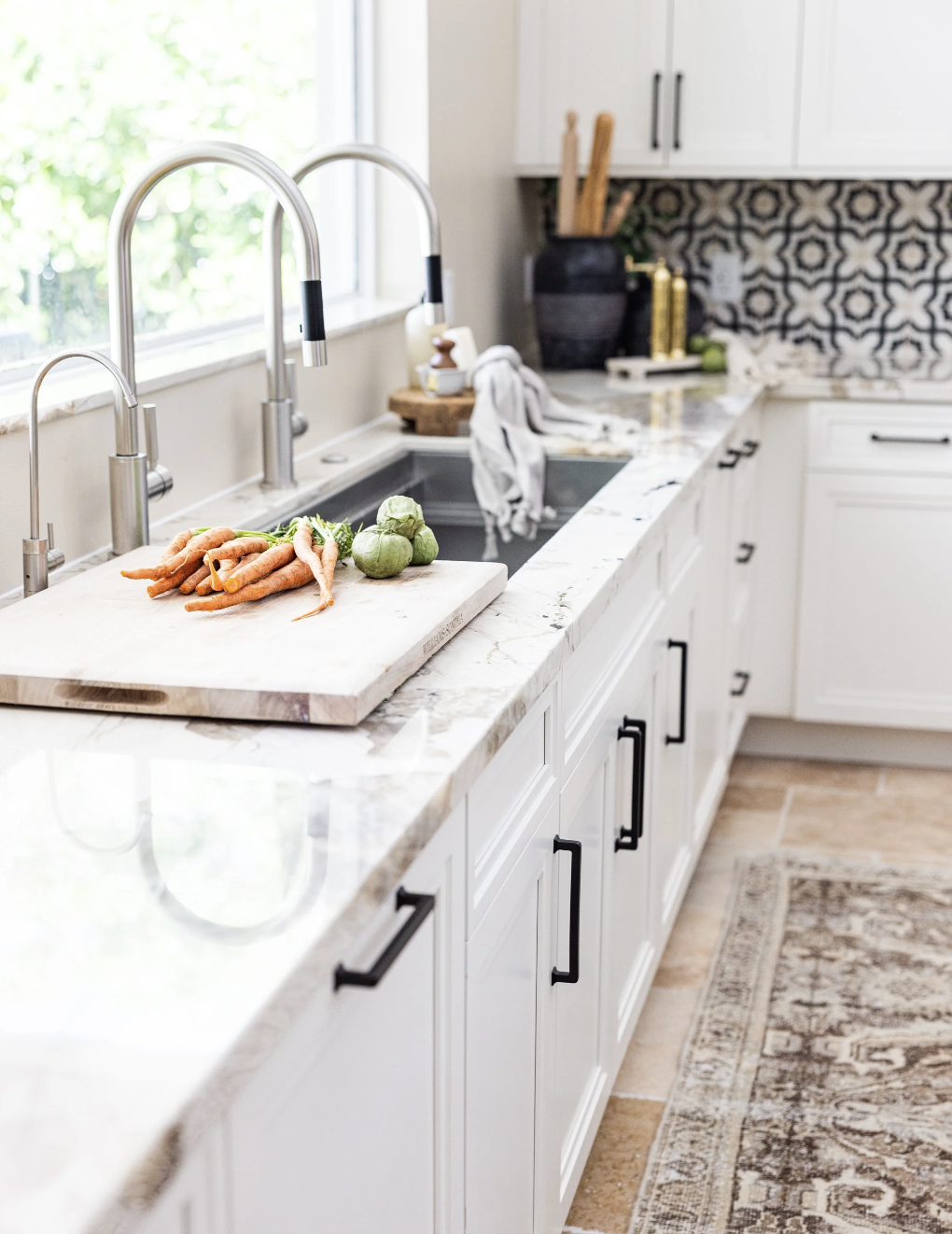Seamless Kitchen Style Ideas: The Subtle Art of Blending
If you’re fond of multiple interior styles, there’s a way you can seamlessly combine them in your kitchen design plan (and yes, it can actually look good).
Blending interior design styles is perfect for keeping your kitchen from feeling too predictable without becoming over the top. This is where the key challenge comes in: discovering ways to make this seamless transition while staying true to your design preferences and avoiding aggressive transitions.
Our South Florida kitchen design company will dive into the different methods of creating a stunning kitchen that blends your favorite design styles.
Top Kitchen Design Elements for Seamless Transitions
It’s easy to get carried away when you’ve got multiple interiors you’re looking to take inspiration from. However, nailing down a few key design principles before your remodel can simplify the process.
Take neutral perimeters and bolder islands, for example. This draws the eye to specific elements in your kitchen without being “too much” — if done correctly. Pair timeless, neutral wood cabinetry around your walls with a bolder, darker island for perfectly-balanced contrast.
If you’re interested in more transitional kitchen design, then it’s important to focus on consistency and clean lines. This means taking extra care to choose the right proportions, high-end materials, and sleek, streamlined silhouettes to ensure mixed styles are cohesive.
Lastly, you never want to underestimate the power of intentional, often repeating design elements. Carefully look for details like custom cabinetry with shaker versus flat panel doors, contrasting color palettes, mixed materials, and understated accents like elegant molding or trims.
Image: Kith Kitchens
Introduce Style “Anchors”
Style anchors are key in blended kitchen designs. An anchor serves as a dominant design choice throughout your kitchen layout, holding the room’s design together.
Introducing your style anchors can be done by:
Choosing one “main” style: Opting for one key style as your foundation—whether that’s contemporary or farmhouse—is great for seamless transitions into your secondary style.
Consistent Cabinets: Yes, this plays a larger role than you think. Since cabinets take up the most space in your kitchen, choose one style to give your home a clear foundation.
#1 material: Pick your favorite one. For instance, choosing one key material like white oak or soapstone as the common tie that links your design elements together (similar to choosing a main style).
These anchors each provide you with a solid design element, leaving you plenty of room to play.
Image: Wood Harbor
Prioritize Transition Zones in Kitchen Design
Intentionality also plays a massive role in cohesive kitchen design that draws from different styles. Using gradual, or “slow” transitions is a prime way to ensure intentionality, as it can hold together contrasting inspirations.
Using architectural features also make the perfect bridge between designs.
These kitchen design ideas all work as a bridge:
Pillars
Trim
Crown molding
Materials that unify, like what you choose for countertops, backsplash, and hardware, repeat across kitchen zones to create common thread. This plays a key role in ensuring you get that seamless transition throughout your kitchen layout.
Additionally, opting for consistent spacing can do wonders in a blended kitchen. Ensuring not only spacing but proportions and alignment throughout your kitchen can also help with combining divergent style elements.
Image: Curated Kitchen Co.
Bring Your Favorite Kitchen Interiors Together
If you’re drawn to multiple kitchen styles, make the most of it. Opting for a kitchen that expertly blends multiple kitchen designs adds unique charm and character to your home. Taking charge of the design process by knowing how to balance these styles with intentionality and subtlety is a true art—allow our West Palm Beach kitchen design company to guide you through the process. Contact us today!



